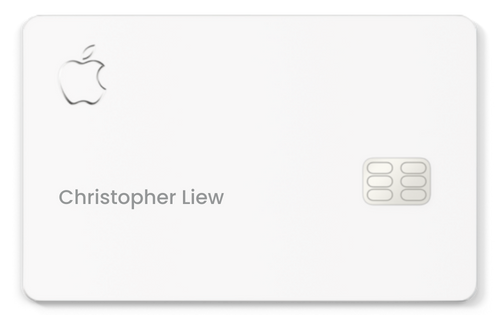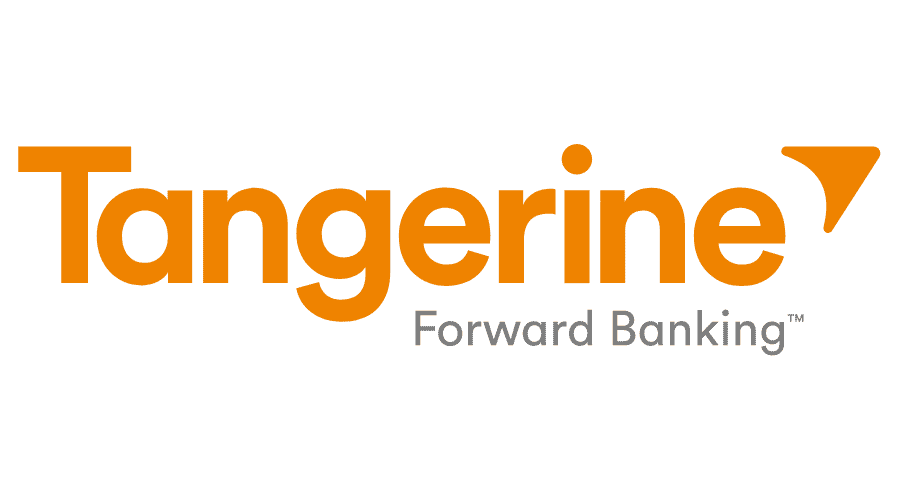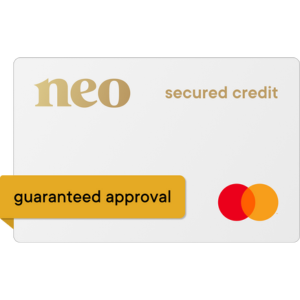Do you own multiple Apple products? If so, then the Apple Card could be for you.
With no annual fees and a generous cash back policy, it’s no wonder why millions of people have chosen the Apple Card over traditional credit cards.
There’s just one problem – the Apple Card isn’t available in Canada (yet).
However, there’s reason to believe that it could be coming soon.
Below, I’ll share my in-depth review of the credit card, explain its pros and cons, and speculate when it might hit the Canadian market. I’ll also show you some of the best Apple Card alternatives that you can apply for in Canada today!
Credit Card (Coming soon to Canada!)
Earn 3% cash back on Apple Products, 2% cash back when using Apple Pay, and 1% cashback on everything else.
- High-quality titanium credit card
- Flexible credit limit
- No late fees
- Apple Card Family feature lets you build credit together
- Generous 3% cash back on Apple purchases
- Unlimited daily cash back (no daily limits)
- 2% cash back on most Apple Pay purchases
- No annual fee
- It’s not available in Canada (yet)
- Not compatible with Android devices (you need Apple Pay)
- Purchases made with the physical card only earn 1% cash back
- Apply Pay isn’t accepted everywhere
- No special offers or welcome bonuses
When Will The Apple Credit Card Be Available In Canada?
First, let’s address the elephant in the room.
Namely that the Apple Card is not yet available to Canadians. Currently, it’s only available to US residents. Apple’s premier credit card was just released in 2019.
Given that it’s a brand-new card, Apple is likely still ironing out the creases in its new card before it begins to scale globally. Additionally, expanding a financial service into a new country comes with its own share of challenges, such as:
- Adjusting policy to comply with cross-border regulations
- Obtaining trademarks and operating rights within a new country
- Partnering with local credit bureaus and banks
However, the Apple Card’s trademark application was recently approved in Canada.
Apple was granted the right to trademark the terms ‘Apple Cash’ and ‘Apple Card’ in Canada in early-2021, which indicates that it’s planning to launch the card in Canada in the near future.
Apple Pay has already been available in Canada since 2015, allowing Apple users to make contactless payments with their Apple devices. Once the Apple Card launches in Canada, it can be directly integrated with their device’s Apple Wallet platform.
Apple Card Overview

Although the Apple Card isn’t available in Canada yet, it’s still worth knowing about, so you can prepare for its inevitable Canadian launch. So, here’s a quick overview.
On the surface, it’s a lot like a traditional credit card. Apple introduced the Apple Card in 2019, which is specifically designed to be used with the Apple Pay feature available on the iPhone and Apple Watch.
It’s a MasterCard credit card, which means you can use it anywhere Mastercard is accepted (which is most places that accept card payments).
Apple Card Features
Like many other credit cards, the Apple Card offers 1-3% cash back rewards on purchases, which is a great way to put extra money in your pocket.
Unlike many traditional credit cards, though, users won’t have to worry about fees like annual, late, or over-the-limit fees. That’s right – there are no Apple Card fees whatsoever.
This is a huge selling point, as this is where credit card companies usually try to capitalize on their customers.
Additionally, the interest rates are relatively low, and you’ll be able to earn unlimited daily cash back.
Since the credit card integrates directly with your Apple device, you can view and manage your account right from your iPhone in real time. The Apple Card is also very secure, featuring security measures like:
- One-time security codes for online purchases
- The ability to lock or unlock your card instantly through the Wallet app.
Now, let’s take a quick look at some of the Apple Card’s other perks.
Durable Titanium Card
The Apple Card is primarily designed to be used as a virtual card through your device’s Apple Pay system. However, all cardholders will also be issued a physical credit card – which is quite nice if I say so myself.
The Apple Card is an ultra-durable, laser-etched, titanium card that’s powder-coated in Apple’s signature shade of piano white.
Put simply, this isn’t a card you have to worry about getting scratched up, bent, or broken in your wallet.
Apple Card Family
The Apple Card Family feature is arguably the most notable feature.
If users choose to, they can create an Apple Family sharing group, which allows up to two co-owners to manage the account, build credit together, and set limits on each other’s spending.
The owner or owners of the Apple Card Family can also add participants as young as 13. The participants you add to the group can use your personal credit limit up to a certain amount you or your co-owner specify (as you control each participant’s spending limits).
This is similar to adding an authorized user to a traditional credit card, only you have more control. The Apple Card Family feature is an excellent way to start teaching your kids good financial habits and budgeting in a controlled environment.
Apple Card Monthly Installments
Need to buy a new iPhone, Macbook, or another Apple device?
Apple Card users can use the Apple Card Monthly Installments feature to finance their purchases at 0% APR. Additionally, you’ll receive 3% instant cash back (all paid upfront) on the purchase, making it the best way to go about purchasing Apple products.
This feature is somewhat similar to Buy-Now-Pay-Later programs and allows you to break an expensive purchase into more affordably monthly or bi-weekly programs. The only difference is that you’ll be able to earn cash back – which you won’t be able to with traditional BNPL programs like Klarna or Afterpay.
Easy Apple Pay Integration
The Apple Card is meant to be used with Apple Pay on your mobile device. As soon as you get your card, you’ll be prompted to add it to your Apple Wallet. This will allow you to keep track of your credit card, adjust spending limits, and make payments with Apple Watches or iPhones.
Apple Card Drawbacks
The main downside of the Apple Card is that it’s not a viable option for Android users. The card requires users to have an Apple device and use Apple Pay. Without these, the card is all but useless.
From a marketing perspective, this card is pure genius, as it effectively locks users into being lifetime Apple product users if they want to keep their cards. If you’re a fan of Apple products, it’s great. If you ever see yourself switching to another device, though, then it may not be the best option.
Aside from this, there are a few other drawbacks of the Apple Card that are worth noting.
Apple Pay Isn’t Accepted Everywhere
The Apple Card was designed to be integrated with Apple Pay. Although Apple Pay is widely used throughout Canada, not every merchant accepts it.
Some merchants may have outdated or broken point-of-sale systems that simply don’t take contactless payments. Other vendors simply may not accept it.
Low Cash Back With Physical Card Purchases
This brings us to the next point…
The Apple Card offers generous cash back on most purchases made through Apple Pay, including:
- 3% cash back on all payments made at the Apple Store (including online) or the Apple App Store
- 2% cash back on all other purchases made via Apple Pay
However, you’ll only receive 1% cash back when you make payments with your physical card.
Presumably, this policy is implemented to make sure that cardholders keep on using and updating their Apple devices.
Otherwise, it would be too easy for cardholders to switch over to another brand of phone, such as Samsung, while still retaining all of the Apple Card’s cash back benefits.
No Welcome Bonus
Some credit cards offer new customers a welcome bonus, which may award the cardholder with a cash bonus if they spend a certain amount within a given period of time. Other cards may offer free airline miles or other credits simply for signing up and getting approved for a new card.
Unfortunately, the Apple Card doesn’t offer any of these bonuses or a first purchase reward.
Top Alternatives To The Apple Card In Canada
Now that you’ve had a chance to consider the various pros and cons of the Apple Card, let’s take a minute to look at some of the best alternatives that you can apply for today.
The advantage of these cards is that they can be added to any wallet you might have and be used as a virtual card, including:
- Apple Wallet
- Samsung Pay wallet
- Google Pay wallet
1. KOHO Premium Card
- Annual Fee: $84 per year
- Cash Back: 2% cash back on three chosen categories, 0.5% on everything else
Unlike the Apple Card, the KOHO card isn’t a credit card. Rather, it’s a prepaid MasterCard that allows you to earn unlimited daily cash back. Simply link it to your bank account, load it with cash, and use it in place of your debit card.
The most popular KOHO card is the standard free card, which allows users to earn 1% cash back on everything.
However, I’d recommend the KOHO Premium account instead, as it allows users to earn 2% cash back on three chosen categories (i.e., fuel, groceries, dining out).
In addition to earning daily cash back, this prepaid MasterCard also allows you to earn 2% interest on your card’s balance and doesn’t impose any foreign transaction fees, making it great for frequent travellers.
Lastly, you’ll have access to KOHO’s built-in budgeting app, which allows you to track your spending in various categories, set financial goals, and stay on top of your finances.
2. Tangerine Credit Card
- Annual Fee: None
- Cash Back: Up to 2%
Tangerine is a 100% online bank that offers two different credit cards:
- The Tangerine Money-Back MasterCard
- The Tangerine World MasterCard
Both cards have no annual fees and allow users to earn up to 2% cash back on select categories. the main difference between the two cards is that the Tangerine World MasterCard comes with some additional perks and requires applicants to have a gross income of at least $60,000 per year.
Unlike traditional banks, Tangerine can offer no annual fees since it doesn’t have to maintain brick-and-mortar locations. If you already bank online with Tangerine, then applying to the bank’s card will be even easier, as your information will already be in the system.
3. Neo Money Credit Card
- Annual Fee: None
- Cash Back: Up to 5% cash back
The Neo Money card has some seriously great features, such as:
- 15% cash back on your first purchase
- Up to 5% cash back at participating stores
- Built-in budget tracker to keep up with bill payments
- Auto-pay to help you keep up with your monthly payment (limits late payment fees)
The purchase rate APR ranges between 19.99% and 26.99%, depending on your creditworthiness and the current economic climate. You don’t have to worry about any annual fees, and you can use your cash back rewards wherever you’d like.
4. American Express Cobalt Card

- Annual Fee: $12.99 per month
- Cash Back: 1x to 5x points, depending on the category
If you’re looking for a credit card that offers travel perks and cash back on travel-related expenses, then the AMEX Cobalt Card is definitely worth considering.
Although AMEX cards generally entail higher processing fees, and the Cobalt card has a $12.99 monthly fee, it offers generous points for several categories:
- 5x points for food and beverage purchases (dining out and groceries)
- 3x points for streaming purchases (Netflix, YouTube Premium, etc.)
- 2x points for travel expenses (planes, hotels, etc.)
- 1x points on all other purchases
The point system American Express uses is very similar to the cash back percentage offered by traditional credit cards. When you earn 2x points, it’s the same as earning 2% cash back. Given the rewards, I’d say that the high monthly fee is well worth it, especially if you use the card regularly.
Can I Use My Apple Card For Balance Transfers?
A balance transfer involves using the balance of a new credit card to pay off another credit card or an existing loan. Most credit cards charge higher rates for balance transfers compared to everyday purchases.
If you read the Apple Card’s underwriting (backed by Goldman Sachs), you’ll see that the Apple Card cannot be used for balance transfers.
What’s The Credit Limit For The Apple Card?
The Apple Card’s credit limit ranges between $500 and $15,000. Just like the card’s variable APR, your spending limit is determined based on creditworthiness factors, such as:
- Your credit score
- Your payment history
- Your income
Keep in mind that you can almost always request a credit limit increase after you’ve shown responsibility with a lower credit limit. Most credit card companies
If you want to get approved for a higher monthly credit limit, then you’ll need to make your minimum payment on time every time. You should also make regular monthly payments in larger amounts to keep your card balance low.
Apple Cash Card vs. Apple Card: What’s The Difference?
Apple Pay users can request an Apple Cash Card, which allows them to spend their Apple Pay balance, similar to a prepaid MasterCard like the KOHO card.
This is distinctly different from the Apple Card, which is a credit card.
The Apple Cash Card is similar to a pre-loaded Apple gift card. Although it can be added to your Apple Wallet app, you won’t earn any cash back while using it, and it won’t contribute to your credit history in any way.
Conclusion – What’s The Best Alternative To The Apple Card In Canada?
The Apple Card is a great overall credit card for those who own Apple products. However, it’s not available in Canada yet. The best alternative to the Apple Card (in terms of rewards and cash back) is the AMEX Cobalt Card.
If you’re looking for a non-credit card that still allows you to earn cash back, I’d suggest a KOHO Premium account, as it allows users to earn up to 2% cashback in several categories.
If these don’t sound like your cup of tea, keep reading to see my list of the best credit cards for bad credit next!







